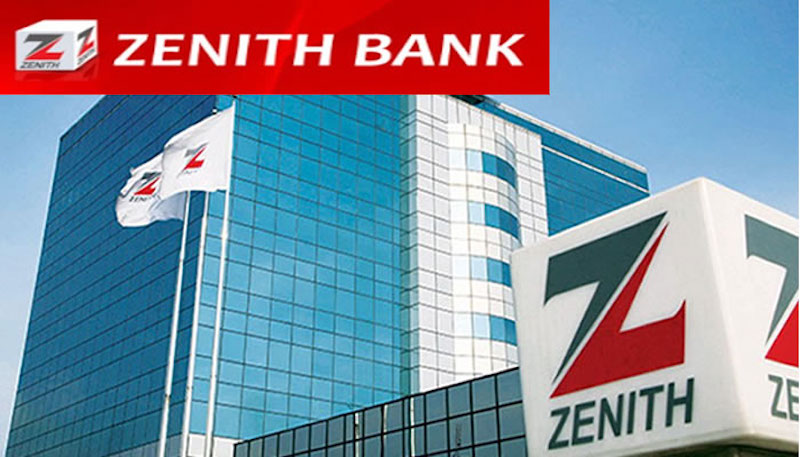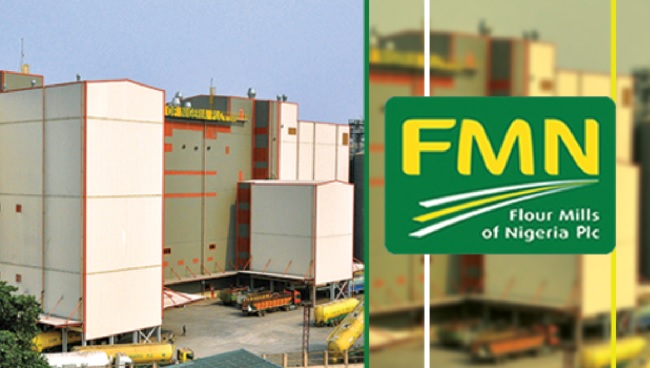Story behind the figures
Q3 2022: Amid operational headwinds, Dangote Cement grows revenue by 15.2%
By Philemon Adedeji
Multinational Cement manufacturing company, Dangote Cement, in its unaudited financial statement ended September 30th, 2022, submitted to Nigerian Exchange Limited (NGX), the group revenue reported for the period moved stronger amid operational headwinds.
“Dangote Cement remains resolute in transforming Africa, while creating sustainable value for their stakeholders.”
Specifically, the analysis of the results revealed that the group revenue reported grew marginally to a decent 15.2 per cent year-on-year (Y-o-Y), to N1.177 trillion in nine months of 2022 from N1.022 trillion in nine months of 2021, largely driven by better price realisation to offset rising cost.
The cement manufacturing company declined in its Profit After Tax (PAT) by 23.41 per cent year- on- year to N213.1 billion in nine months of 2022 from N278.25 billion reported in third quarter 2021.
Foreign exchange losses cements earnings decline
Further down the P&L, the group recorded Net finance cost of N44.49 billion, up 220.2 per cent Year-on-Year in third quarter 2022. The company incurred a significant N31.73 billion foreign exchange loss due in part to the FX crisis impacting imported input components and well as depreciation in some Pan-African currencies that is, CFA and Ghanaian Cedi, severely eroding the group’s bottom line.
Consequently, Profits Before Tax declined by 42.8 per cent Year-on-Year to N71.010 billion in third quarter of 2022 from N124.233 in third quarter of 2021. Despite 20.2 per cent decline in tax expense in third quarter 2022, Net Income fell by 52.7 per cent year -on-year (Y-o-Y).
Earnings Per Share (EPS), recorded for the period under review declined by 23.5 per cent to N12.41 in nine months of 2022 from N16.23 in nine months of 2021, partly owing to N72.4B in unrealised foreign exchange losses from the depreciation in Pan-African countries
For the third quarter of 2022, the management of Dangote Cement has recorded a decline in the overall volume of sales of cement to 6.2 per cent to 20.8 metric tones in nine months of 2022
The interplay between revenue and Cost of sales caused gross profit to gained 12.1 per cent to 693.435 billion in third quarter of 2022 from 618.798 billion in third quarter of 2021.
As regarding, Operating Expenses, Dangote Cement reported stood at N262.917 billion in nine months of 2022 from N185.688 billion in nine months of 2021, representing an increase of 41.6 per cent.
The volume elevated by the high base of nine months 2022 was due to inflation and energy supply disruptions.
Pan-African volume down owning to extended plant maintenance in Senegal and Congo and volatility in cement or clinker landing cost in Cameroon, Ghana, and Sierra-leone.
The Gross margin shrank by 533 basis points to 56.3 per cent in third quarter 2022, a seven-quarter low, owing to rapid Cost of sales growth (+26.8 per cent y/y). Growth in Cost of Sales was driven mainly by the surge in the cost of Fuel & Power consumed (+59.4 per cent y/y), which reflects the increased price of Automotive Gas Oil (AGO).
In addition, Material Consumed (+19.1 per cent y/y) and Other Production expenses (+49.9 per cent y/y) contributed to pressure Cost of Sales as a result of FX rate deterioration inflating some imported input components. Gross Profits themselves managed to grow by 1.7 per cent year-on-year (Y-o-Y).
Earnings Before Income Tax Depreciation Ammortisation (EBITDA) declined by 12.6 per cent year -on-year Y-o-Y in third quarter Q3 of 2022, driven by a 39.3 per cent year-on-year Y-o-Y rise in Operating expenses. As is the case with production costs, the rise in AGO prices was the primary driver of elevated Haulage expenses (+61.2 per cent y/y), making up over 82 per cent of Selling and Distribution Costs.
Management also highlighted substantial freight costs in Cameroon, Ghana, and Sierra Leone, causing volatility in the landing cost of cement and clinker.
In addition, there was an unusual rise in Advertisement and Promotions, by 486.9 per cent year-on-year (Y-o-Y), owing to the 3rd season of the company’s National Consumer Promotion “Bag of Goodies 3” in efforts to drive consumer engagement.
Consequently, the EBITDA margin shrank 1,056 basis points to 38.6 per cent, the lowest level since Q319.
Nonetheless, in management’s efforts to combat the menace of ever-rising energy costs, the company renewed its efforts to ramp up the usage of alternative fuels, co-processing 101,553 tonnes of waste representing a 77 per cent increase over 9M 2021.
Elsewhere, the company is also ramping up investment in Compressed Natural Gas (CNG) to offset AGO usage, having commissioned a power plant at its Okpella plant.
Reaction
The Vice President of Highcap Securities Limited, David Andori said, this is not an encouraging result because it is below expectation.
Operating expenses seriously dented the profitability of the business. The full year result that investors are expecting will show whether there was subsequent cost recovery or not.
Dangote cement outlook
“We remain very optimistic about the future of Dangote Cement. Our Board is considering all strategic and financial options for the Company. We strive to improve in all areas of our organisation and I thank all our staff for their commitment and effort toward achieving the vision of our Board and Executive Team.
“Our strategy remains steadfast focused on organic growth in Nigeria and Pan Africa, while ensuring that Africa’s regional integration becomes a reality. We will continue to contribute to improving regional trade within Africa by building plants across West and Central Africa, therefore eliminating the need for the importation of cement in addition, we aim to deliver superior profitability and value to our shareholders.
“Lastly, we remain focused on demonstrating our clear commitment to transparency around environmental impacts and strategies for action while taking coordinated steps on climate issues.
“I would like to thank our shareholders, host governments, communities, staff and stakeholders at large, for the support we have received over this transformative but fulfilling year We are grateful for your continuing faith in our Company and look forward to an exoting and productive 2022.”
According to Cordros Research Analyst, Dangote Cement’s revenue performance in 9M 22 was in line with our expectations (-0.04 per cent variance). We are encouraged that the group was able to take advantage of higher prices despite weak volumes across its Nigerian and Pan-African markets. There appear to be positive responses to the 3rd season of its National Consumer Promotion ‘Bag of Goodies 3.’
“On the flip side, we are concerned about the extended outage in the group’s Congolese and Senegalese plants as repair and maintenance activities continue. In addition, we remain concerned about the rising operating expense profile. While management plans to intensify its efforts to ramp up the usage of alternative fuels and source materials locally, energy costs are likely to remain elevated, at least in the short term.
“Overall, we maintain our BUY recommendation on the stock. On our estimates, the stock is trading on 2022F P/E and EV/EBITDA multiples of 8.8x and 5.1x, discounts to emerging market peer multiples of 15.7x and 8.6x respectively.
“Notably, Dangote Cement, is a Africa’s leading cement producer with nearly 51.6Mta capacity across Africa.
“A fully integrated quarry-to-customer producer, it has a production capacity of 35.25Mta in its home market, Nigeria.
“Obajana plant in Kogi state, Nigeria, is the largest in Africa with 16.25Mta of capacity across five lines while the Ibese plant in Ogun State has four cement lines with a combined installed capacity of 12Mta.”
Conclusion
The Chief Executive Officer (CEO), Dangote Cement, Michel Puchercos, On his presenting the third quarter results to the Nigerian Stock Exchange, commented that, “To mitigate the impact of the significant increase in energy and AGO costs, we are strengthening our efforts to ramp up the usage of alternative fuels.
“So far this year, we have co-processed 101,553 tonnes of waste representing a 77 per cent increase over 9M 2021. We are on track to commission our alternative fuel feed system at Obajana lines I and V, and Ibese line II in November. In addition, we are ramping up our investment in compressed natural gas, to reduce our AGO usage.
“Consequently, he explained that the company recorded an increase in revenue of N1,177.3 billion, up 15.2 per cent compared to last year, and Group EBITDA of N515.9 billion, up 0.2 per cent with an EBITDA margin of 43.8 per cent.”
He recalled that Dangote Cement is Africa’s leading cement producer with nearly 51.6Mta capacity across Africa. A fully integrated quarry-to-customer producer, it has a production capacity of 35.25Mta in its home market, Nigeria.
The statement described the Obajana plant in Kogi State, Nigeria, is the largest in Africa with 16.25Mta of capacity across five lines while the Ibese plant in Ogun State has four cement lines with a combined installed capacity of 12Mta.
The Gboko plant in Benue state has 4Mta while the Okpella plant in Edo state has 3Mta. Through recent investments, Dangote Cement has eliminated Nigeria’s dependence on imported cement and has transformed the nation into an exporter of cement serving neighbouring countries, the statement said.
Story behind the figures
Zenith Bank Plc: A profitable outing


Introduction
Our analysis of Zenith Bank’s 2023 recent annual report shows that the year was quite a profitable one for the bank. Not only did the bank record a commendable growth in its turnover, it was also able to maintain such momentum to its profit.
As a direct fallout, the bank’s profitability ratios (such as profit margin, return on assets, return on equity, net interest margin and pre-tax profit per employee) remained high enough for the bank to remain relevant. It is important to note that the bank is also doing very well in its core banking operations.
Growth indices
For its 2023 financial year, the bank recorded a very commendable 125.4 percent growth in its turnover (inclusive of interest and discount income, and income from non-banking operations). Such turnover rose to an all-time high of N2.13 trillion from N945.6 billion in the preceding year.
It is worthy of note that while the bulk of the bank’s turnover was contributed via interest and discount income, it also stepped up the tempo of its non-core banking operations during the course of the year and earned significantly more money from there.
Pre-tax profit growth rate followed an even more commendable pattern, growing much more steeply as compared to the growth recorded in the prior year. Profit before tax obligations for 2023 stood at N795.9 billion, up from N284.7 billion in the erstwhile year, and translating into a 179.6 percent growth rate. After-tax profit followed the same pattern as pre-tax profit did, growing commendably by 202.3 percent over the preceding year’s level.
Total assets deployed by the bank for the 2023 year improved to a higher level of N20.4 trillion, about 65.8 percent higher than the N12.3 trillion assets deployed in December 2022, while shareholders’ funds advanced to N2.3 trillion from N1.4 trillion.
Profitability ratios
In all ways, the 2023 financial year was a profitable one for Zenith, as it recorded a marked improvement in almost all of its profitability ratios.
First, the bank did well in the execution of core banking operations, as shown by its net interest margin. Zenith recorded a net interest margin of 64.3 per cent. This interest margin, although lower than what the bank recorded in the preceding year, was on par with the industry average for 2023. This lower 64.3 percent net interest margin happened despite the increasing gap between the bank’s lending rate (which grew to 17.5 percent in 2023 from 13.5 percent in December 2022) and its deposit rate (which grew to 2.7 percent from 1.9 percent).
Profit margin also grew to 37.3 percent in 2023 from 30.1 percent in December 2022. What this means is that for every N100 earned by the bank in the course of the year, N37.30 made it to the profit position. This is as compared to N30.10 for the year preceding 2023.
Return on assets (ROA) also recorded an improvement. ROA grew to 3.9 percent in 2023 from 2.3 percent in December 2022. Analysis shows that every N100 worth of Zenith’s assets contributed N3.90 to its pre-tax profit in 2023, up from N2.30 in 2022.
For every N100 equity deployed, the bank made an after-tax profit of N29.10, up from N16.20 in the preceding year. Thus, return on equity for the year was also better than that of the prior year.
Asset quality
The proportion of Zenith’s gross loan stock that became classified in 2023 declined by increasing to 7.6 per cent from 5.8 per cent in 2022. Meanwhile, loan loss reserves for 2023 could cover only 20.4 percent of Zenith’s classified loans.
For 2023, the bank was not as careful to limit the portion of its equity stock that would be wiped out were its classified loans to become totally irrecoverable. Classified loans as a portion of shareholders funds stood at 23.4 percent in 2023, higher than 17.2 percent in 2022.
Staff matters
The bank did very well in matters regarding its employees for the year ended December 31 2023. Pre-tax profit per employee grew to N97.47 million on the average, better than the N35.25 million employees contributed on the average to the bank’s pre-tax profit in 2022.
The bank was, however, generous enough to compensate its employees more in 2023 than it did in December 2022. Average staff cost rose to N15.23 million from N10.69 million within the course of 12 months. This means that there was a N4.54 million addition to what an employee earned (on the average) between December 2023 and December 2022.
Despite the fact that it upped its staff costs, Zenith succeeded in deflating such staff costs as a proportion of income earned. Staff costs as a portion of turnover decreased to 5.8 percent in 2023 from 9.1 percent in December 2022.
Other ratios
Zenith’s equity (a company’s primary and cheapest source of funding) could finance 32.9 percent of the loans and advances it gave out to borrowers, down from 33.4 percent recorded in the erstwhile year.
Also, at 0.6 times, the current ratio was not on par with the industry average for 2023. What this means is that for every N1.00 of short-term obligations, the bank had only 60 kobo in short-term assets, and was not completely able to meet short term debts from short term assets.
Having a debt to equity ratio of 7.8 shows that the bank is using N7.80 of liabilities in addition to each N1.00 of stockholders’ equity. In other words, the bank is using N8.80 of total capital for every N1.00 of equity capital.
Return on equity
Another performance ratio in which Zenith did well was in its return on equity (ROE) of 29.9 percent. Zenith’s ROE for 2023 stood at 29.1 percent.
Return on assets
This was one of the ratios in which Zenith outperformed its peers. Its ROA was 3.9 per cent, higher and better.
Pre-tax profit margin
Although Zenith Bank was not able to grow its gross earnings and pre-tax profit as fast as its peers, it was however better able to translate its turnover into profit. For the 2023 financial year, pre-tax profit margin (which measures a company’s ability to squeeze as much profit as is possible from turnover) for Zenith Bank was 37.3 percent.
Conclusion
On its own, in a stand-alone analysis, Zenith Bank is doing quite well and this should be commended. It remains to be seen, however, if Zenith and UBA will be star performers in the banking industry for 2023, or if 2023 was a generally good year for all Nigerian banks.
Story behind the figures
Honeywell Flour Mills Plc: A tough year


By Folakemi Emem-Akpan
Introduction
Honeywell Flour Mills Plc went the way of most other Nigerian companies in 2023, recording lower turnover. It went one step further and recorded downright end of the year losses. Because of the losses, the company did not have good profitability ratios and seems to be floundering. All in all, it was a tough year for the company.
Growth indices
Honeywell followed the general rule of earning more income in 2023 than it did in 2022. The growth in gross earnings, at 8.0 percent, was however lower than most other companies recorded. Gross earnings stood at N147.3 billion, a little higher than N136.4 billion in the prior year. Even though the company was careful to curtail cost of sales, it couldn’t quite do the same for operating expenses (inclusive of advertising and promotion, distribution, administrative and interest expenses). These grew much faster collectively in 2023 than in 2022.
For the second year in a row, Honeywell recorded a loss rather than a pre-tax profit. Loss before tax obligations for 2023 stood at a staggering N8.9 billion, a deeper loss than the N170 million pre-tax loss recorded in the prior year. After-tax loss was N260 million for the 2023 financial year, still a loss, but better than the N980 million loss recorded in 2022.
Total assets deployed by the company for the 2023 year grew to N165 billion, 11 per cent more than the N148.7 billion assets deployed in 2022. Meanwhile, shareholders’ funds declined by 27.5 per cent to N32.0 billion in the review year.
Profitability ratios
Not only did Honeywell record losses instead of profitability on a stand-alone analysis basis for the 2023 financial year, all parameters also showed a regression when compared to its preceding years’ result. First to achieve a regression was the profit margin of the company. Instead of a profit margin, there was a loss margin of 6.0 percent, meaning that for every N100 earned by the company in the course of the year, N6.00 of it translated to loss. This is as compared to a loss of 10 kobo in 2022.
Also to record a decline was return on assets (ROA). Loss on assets was 5.4 percent, as compared to a loss on assets of 0.1 percent in the erstwhile year. For the 2023 financial year, Honeywell deployed equity valued at N32.9 billion and for every N100 equity deployed, the company made an after-tax loss of 78 kobo.
The operating margin (which measures what proportion of turnover a company spends on operations and which must be kept as low as possible without compromising standards) was one of the reasons for the company’s bad results for the year. This is because such operating margin was 6.9 percent, higher and worse than the 5.2 percent recorded in the prior year.
Staff matters
As regards staff matters, pre-tax loss per employee stood at N10.9 million on the average. This is as compared to the N204 million pre-tax loss employees contributed on the average to the company’s pre-tax loss in 2022.
Average staff cost then increased significantly to N8.84 million from N5.99 million within the course of 12 months. This means that there was a N2.85 million addition to what an employee earned (on the average) between 2023 and 2022.
Perhaps, because it increased its staff costs, Honeywell did not succeed in deflating its staff costs as a proportion of income earned. Staff costs as a portion of turnover grew to 4.4 per cent in 2023, higher than 3.6 percent in 2022.
Other ratios
At 0.9 times, Honeywell’s current ratio was a little lower than the industry average for 2023. What this means is that for every N1.00 of short-term obligations, the company had 90 kobo in short-term assets, and was not fully able to meet short term debts from short term assets.
Having a debt-to-equity ratio of 4.0 shows that the company is using N4 of liabilities in addition to each N1.00 of stockholders’ equity. In other words, the company is using N5.00 of total capital for every N1.00 of equity capital, higher than it did in 2022.
Honeywell Vs Flour Mills: Still a loss
We have established that Honeywell did not improve its lot when its results are compared on a year on year basis. We can also establish that Honeywell did not compete favourably against other companies in the flour milling business for the 2023 FY. A comparison against Flour Mills buttresses this point.
While Flour Mills is easily the bigger of the two companies (in fact, it is the parent company of Honeywell), a bigger size does not automatically translate into better profitability. For the 2023 review year, Flour Mills was also the clear leader in terms of performance. Of six profitability ratios examined, Flour Mills led in all.
Turnover growth rate
For the 2023 financial year, Flour Mills had a turnover growth rate of 32.8 percent, as compared to Honeywell’s turnover growth rate of 8 per cent for the same period under review. Analysis shows that Flour Mills was the winner in this respect.
Pre-tax profit growth rate
For the year, Flour Mills’ profit before tax grew by a mere 1.5 percent. Yet, this was much better than the 5,074 percent decline Honeywell recorded. However, it is also important to note that while Flour Mills witnessed an actual growth, Honeywell had a pre-tax loss of N8.9 million.
Between turnover and profit
For the 2023 financial year, pre-tax profit margin (which measures a company’s ability to squeeze as much profit as is possible from turnover) for Honeywell was actually a pre-tax loss margin of (6.1) percent. Flour Mills, on the other hand, had a better pre-tax profit margin of 2.6 percent.
Return on equity
Flour Mills led its peers in terms of return on equity (ROE), recording an ROE of 13.1 per cent. Analysis shows that while every N100 worth of equity deployed by Flour Mills earned it N13.10 in after-tax profit, such N100 equity deployed earned Honeywell 78 kobo as after-tax loss.
Return on assets
ROA for Flour Mills was 3.7 percent, down from 5.9 percent in the prior year. This means that of every N100 worth of assets deployed by Flour Mills, N3.70 accrued to it as pre-tax profit while Honeywell recorded a N5.40 pre-tax loss from every N100 worth of assets employed.
Pre-tax profit per employee
For the 2023 financial year, Flour Mills recorded a pre-tax profit per employee of N6.72 million, much better than Honeywell’s N10.9 million pre-tax loss per employee.
Conclusion
Honeywell’s loss for its 2023 financial year shows how events beyond a company’s control can have an effect, either negative or positive, on its bottom line. It is clear that the economic recession Nigeria has been experiencing had a severely limiting effect on Honeywell’s revenues and performance. It remains to be seen what the 2024 FY will hold for the company.
Story behind the figures
PZ Cussons Plc: A commendable outing


Introduction
A thorough analysis of PZ CussonsPlc current financial report shows that it is yet growing. It was able to step up the level of its business activities as shown by a growing turnover base. It was also able to increase profit during the course of the year. Profitability ratios for the year were a progression over the preceding year’s. Profit margin improved, as did return on assets, return on equity, and pre-tax profit per employee.
Truth be told, the conglomerate’s results for the 2023 financial year was extremely commendable, given the stressful operational environment in Nigeria for the review year.
Growth indices
For its 2023 financial year, PZ Cussons recorded a level of growth in all of its major parameters. First to receive a boost was the company’s gross earnings. Gross earnings for the year stood at N113.96 billion, 14.5 percent higher than the N99.5 billion recorded in the preceding year. This 14.5 percent growth rate is as compared to a higher growth rate of 20.5 per cent in 2022.
Because direct costs grew at a slower pace than turnover did, gross profit advanced by 35.6 percent to N32.9 billion. After deducting operating expenses from the gross profit and adding other income (including interest income), PZ Cussons was left with a pre-tax profit of N20.46 billion, a whopping 104.4 percent higher than the N10.01 billion pre-tax profit recorded in the erstwhile year. This 104.4 percent growth rate is as compared to a pre-tax profit growth rate of 213.8 percent in the preceding year.
After-tax profit (which was also the same as distributable profit) grew over the preceding year’s by as much as 114.2 percent to N14.35 billion. For the first time in a while, the conglomerate chose not to dedicate any portion of its distributable profit to dividend. Thus, shareholders did not receive any dividend.
Total assets for the year stood at N166.38 billion, up from N109.47 billion in 2022 and translating into a 52.0 percent growth rate. Total liabilities also grew by 64.5 per cent to N118.0 billion from N71.73 billion while shareholders’ funds grew by 28.1 per cent to N48.36 billion from N37.74 billion in the erstwhile year.
Profitability ratios
For the year, operating margin (which calculates what proportion of turnover is used to finance operations) was 21.7 percent, slightly lower and therefore better than the 24.7 percent that was recorded in 2022. What this means is that the probable margin for PZ Cussons to be profitable expanded, albeit slightly during the course of the year.
Perhaps because of this, the profit margin for the year increased. Profit margin for 2023 stood at 18.0 percent, higher than 10.1 percent in the preceding year. What this means is that N18.00 made it to the profit position for every N100 earned in 2023, up from N10.10 in 2022.
Return on assets (ROA) followed the same pattern. ROA for the year increased to 12.3 percent from 9.1 percent in 2022, meaning that every N100 worth of assets deployed contributed N12.30 to the pre-tax profit for the year, higher than the N9.10 recorded in 2022.
Also, return on equity (ROE) grew to 29.7 percent from 17.8 percent, meaning that every N100 worth of equity employed contributed N29.70 to the after-tax profit in 2023, up from N17.80 in the prior year.
Our examination of this conglomerate’s profitability ratios shows that the company recorded quite a profitable year in 2023, which was not the case for many other manufacturing companies in Nigeria.
Staff matters
In terms of staff matters, the conglomerate did not do too shabbily for the year ended December 31 2023. On the average, each employee contributed N20.54 million to the company’s pre-tax profit, commendably up from N9.63 million in the prior year.
To this end, PZ Cussons reciprocated by increasing its staff cost per employee. On the average, wages and salaries earned by each staff increased to N8.04 million during the course of the year, up from N7.23 million in the preceding.
It is however worthy of note and laudable that despite increasing average staff costs, the company did not actually put itself out more than was necessary. Staff costs as a proportion of turnover decreased (and by so doing, improved) to 7 per cent.
Other ratios
For the year, PZ Cussons’ short-term assets increased to N148.1 billion while its short-term liabilities increased to a collective N94.68 billion. The interplay between these two had an upping effect on its current ratio. At 1.6 times (higher than 1.4 in the preceding year), current ratio was on par with industry standards. What this means is that for every one Naira of short-term obligations, the company had N1.60 in short-term assets, and was more than able to meet obligations as at when due.
The company had a debt-to-equity ratio of 2.4 and this shows that the company is using N2.40 of liabilities in addition to each N1.00 of stockholders’ equity. In other words, the company is using N3.40 of total capital for every N1.00 of equity capital.
PZ Cussons Vs Nestle: PZ Cussons larger and superior
PZ Cussons Plc and Nestle Nigeria Plc are competitors, and both have been operating in the Nigerian conglomerate scene for years. While Nestle is currently the bigger of the two in terms of sales generation and assets employment, PZ Cussons is better when it comes to profit retention. Of the six profitability ratios we examined, Nestle only took the lead in turnover growth rate, while PZ Cussons took the lead in the remaining five.
Sales generation and profit retention
As usual, Nestle recorded more sales in 2023 than PZ Cussons did. Also, Nestle’s growth rate for the year was much better than PZ Cussons.’ This said, PZ Cussons excelled better in translating its sales into profit. It had a positive pretax profit growth rate as compared to Nestle’s decline rate. It also had a profit margin, as compared to Nestle’s loss margin for the year under review.
Returns
PZ Cussons recorded better returns on assets and on equity for the 2023 financial year. Return on assets (ROA) and return on equity (ROE) were 12.3 percent and 29.7 percent respectively. Meanwhile, Nestle had negative returns. For Nestle, ROA was negative 17.9 per cent while ROE was negative 101.9 per cent.
Conclusion
In an operating environment where most companies recorded either negative or slowed down profitability ratios, PZ Cussons is an exceptional, a very laudable one. Its ability to not only generate sales but also to maximise profits for the 2023 financial year is indeed commendable.


-
Finance3 months ago
Court orders Sen. Victor Umeh to repay N136m bank debt to AMCON
-



 Abuja Update2 months ago
Abuja Update2 months agoUNDP, FG partnership needed to achieve inclusion, equity- Minister
-
Abuja Update1 month ago
Banks drive stock market performance with N147bn gain
-



 Infotech4 weeks ago
Infotech4 weeks agoWorld Backup Day: NITDA urges Nigerians to ensure backup of data
-



 Health1 week ago
Health1 week agoCapacity training will reduce migration of health workers- NPHCDA
-
capital market2 years ago
Rt.briscoe, FBNH, Others halts negative performance of stock market
-



 Health3 weeks ago
Health3 weeks agoImmunisation: FG, GAVI seek synergy with Sokoto Govt.
-
Infotech2 weeks ago
Forex for Beginners: Unveiling the currency exchange and how to trade it






